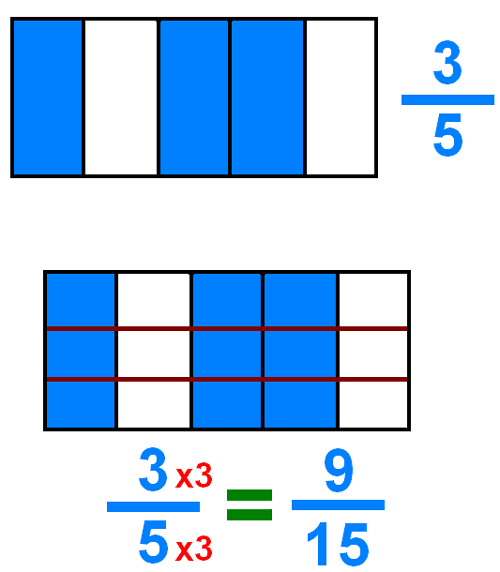In this activity, we will be finding equivalent fractions.
This diagram shows 3/5 of the rectangle shaded blue. When it is split horizontally, each small piece is now 1/15 of the rectangle, so 3/5 = 9/15.

Both the numerator (top) and the denominator (bottom) of the original fraction have been multiplied by the number 3.
We can form equivalent fractions by multiplying the numerator and denominator of any fraction by the same number.
Example
Find the missing equivalent fractions.
|
= |
|
= |
|
= |
|
Answer
If we look at the fractions that have no missing numbers, we can work out the pattern that has been applied to them, and then simply use it to find our missing numbers.
The numerators have increased each time by 3 and the denominators by 5. Did you spot that?
Also, if we look at the numerator of 3 in our first fraction, we can see that it has been multiplied by 3 to get to 9. So, we need to multiply the denominator of 5 by 3 as well, which gives us 15 as our answer!
|
= |
|
= |
|
= |
|
Are you ready to have a go at finding equivalent fractions?



